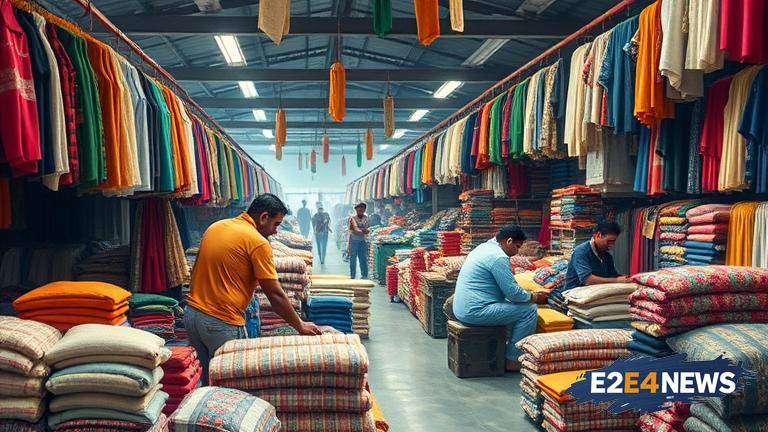The Indian textile industry has been facing significant challenges in recent times, particularly with the imposition of tariffs by the US government. As a result, Indian textile traders are now shifting their focus to other markets, including Europe and Asia. The US has been one of the largest importers of Indian textiles, but the tariffs have made it difficult for Indian exporters to compete with other countries. The Indian government has been trying to negotiate with the US to exempt textiles from the tariffs, but so far, no agreement has been reached. In the meantime, Indian textile traders are exploring new markets to offset the losses. Europe and Asia are being seen as potential alternatives, with many Indian companies already establishing a presence in these regions. The European Union, in particular, is being targeted, with its large and diverse market offering significant opportunities for Indian textile exporters. Asia, too, is being seen as a key market, with countries such as China, Japan, and South Korea offering significant potential for growth. Indian textile traders are also looking to increase their exports to other countries, including those in the Middle East and Africa. The Indian government is providing support to the textile industry, including subsidies and other incentives, to help them compete in the global market. Despite the challenges, the Indian textile industry remains optimistic about its prospects, with many companies investing in new technologies and manufacturing processes to improve their competitiveness. The industry is also focusing on sustainability and environmental issues, with many companies adopting eco-friendly practices and reducing their carbon footprint. The Indian government has also launched several initiatives to promote the textile industry, including the ‘Make in India’ program, which aims to promote manufacturing in the country. The program has been successful in attracting foreign investment and promoting exports. The textile industry is also a significant contributor to India’s economy, providing employment to millions of people and generating significant revenue. The industry is expected to continue growing in the coming years, driven by increasing demand from both domestic and international markets. However, the industry will need to overcome several challenges, including competition from other countries, rising labor costs, and environmental concerns. To address these challenges, the Indian government and the textile industry will need to work together to develop strategies and policies that promote the industry’s growth and competitiveness. This may include investing in new technologies, improving infrastructure, and providing support to small and medium-sized enterprises. The Indian textile industry has a long history and has been a significant contributor to the country’s economy for many years. The industry has undergone significant changes in recent times, driven by technological advancements, changes in consumer demand, and shifts in global trade patterns. Despite the challenges, the industry remains optimistic about its prospects and is confident that it can continue to grow and thrive in the coming years. The industry’s focus on sustainability and environmental issues is also expected to drive growth, as consumers become increasingly aware of the environmental impact of their purchasing decisions. Overall, the Indian textile industry is well-placed to take advantage of the opportunities presented by the global market, and with the right support and policies, it can continue to grow and thrive in the coming years.
